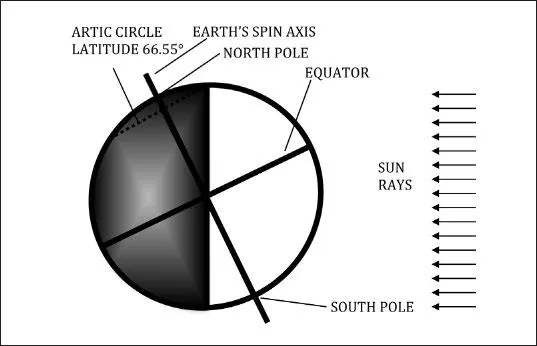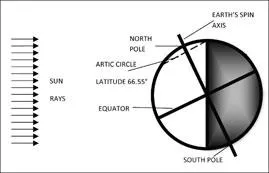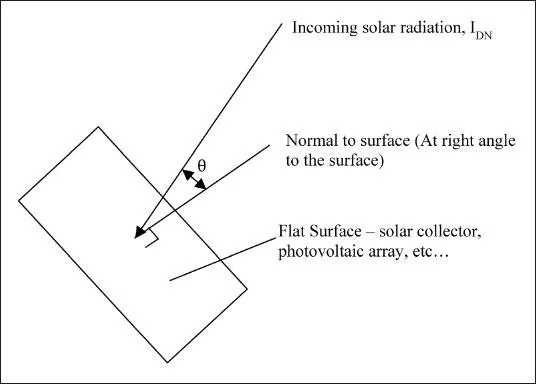
eBook - ePub
Solar Energy Fundamentals
Robert K. McMordie, Robert K. McMordie
This is a test
Buch teilen
- 216 Seiten
- English
- ePUB (handyfreundlich)
- Über iOS und Android verfügbar
eBook - ePub
Solar Energy Fundamentals
Robert K. McMordie, Robert K. McMordie
Angaben zum Buch
Buchvorschau
Inhaltsverzeichnis
Quellenangaben
Über dieses Buch
A compilation of decades of knowledge spanning the author's career as a mechanical engineer specializing in heat transfer and thermodynamics in the solar and aerospace industries, this book is instantly practicable. Topics include definitions of energy terms, relationship of the sun and earth, sunlight on the earth, heat transfer, solar collectors, absorbed solar energy, solar domestic hot water systems, solar photovoltaic systems, solar space heating, solar power towers, Stirling engine solar power systems, passive solar energy, and greenhouse solar collector.
Häufig gestellte Fragen
Wie kann ich mein Abo kündigen?
Gehe einfach zum Kontobereich in den Einstellungen und klicke auf „Abo kündigen“ – ganz einfach. Nachdem du gekündigt hast, bleibt deine Mitgliedschaft für den verbleibenden Abozeitraum, den du bereits bezahlt hast, aktiv. Mehr Informationen hier.
(Wie) Kann ich Bücher herunterladen?
Derzeit stehen all unsere auf Mobilgeräte reagierenden ePub-Bücher zum Download über die App zur Verfügung. Die meisten unserer PDFs stehen ebenfalls zum Download bereit; wir arbeiten daran, auch die übrigen PDFs zum Download anzubieten, bei denen dies aktuell noch nicht möglich ist. Weitere Informationen hier.
Welcher Unterschied besteht bei den Preisen zwischen den Aboplänen?
Mit beiden Aboplänen erhältst du vollen Zugang zur Bibliothek und allen Funktionen von Perlego. Die einzigen Unterschiede bestehen im Preis und dem Abozeitraum: Mit dem Jahresabo sparst du auf 12 Monate gerechnet im Vergleich zum Monatsabo rund 30 %.
Was ist Perlego?
Wir sind ein Online-Abodienst für Lehrbücher, bei dem du für weniger als den Preis eines einzelnen Buches pro Monat Zugang zu einer ganzen Online-Bibliothek erhältst. Mit über 1 Million Büchern zu über 1.000 verschiedenen Themen haben wir bestimmt alles, was du brauchst! Weitere Informationen hier.
Unterstützt Perlego Text-zu-Sprache?
Achte auf das Symbol zum Vorlesen in deinem nächsten Buch, um zu sehen, ob du es dir auch anhören kannst. Bei diesem Tool wird dir Text laut vorgelesen, wobei der Text beim Vorlesen auch grafisch hervorgehoben wird. Du kannst das Vorlesen jederzeit anhalten, beschleunigen und verlangsamen. Weitere Informationen hier.
Ist Solar Energy Fundamentals als Online-PDF/ePub verfügbar?
Ja, du hast Zugang zu Solar Energy Fundamentals von Robert K. McMordie, Robert K. McMordie im PDF- und/oder ePub-Format sowie zu anderen beliebten Büchern aus Sciences physiques & Énergie. Aus unserem Katalog stehen dir über 1 Million Bücher zur Verfügung.
Information
Chapter 1
Introduction
Solar energy can be used in several different ways to provide people with a readily available power source. Basic and early uses of solar energy include using the sun for common tasks such as drying clothes, curing meat, and heating water. In the past few decades, solar energy has been used in residential and commercial settings to power heating and cooling systems such as air conditioners, furnaces, heating, ventilation and air conditioning (HVAC), and water heaters. A common method of harnessing the sun’s energy for these uses is photovoltaics—a process of using solar cells to convert light directly into electricity. On a more substantial scale, power plants can be built using solar energy as the energy source. These plants consist of a field of sun tracking mirrors, called heliostats, which reflect the sun to a solar receiver mounted on a tower. The tower is 200 or more ft high and the receiver captures the solar energy in a working fluid. The working fluid can be water or some other heat transfer fluid. If the working fluid is water, the solar energy boils the water and the resulting steam is used in a conventional steam power plant. If the working fluid is something other than water, it is used to boil water and, again, the steam is used in a conventional power plant.
This book covers the basics of solar energy. Relevant equations and calculations are shown in the text, programmed using Microsoft Excel. The included CD contains Excel programs with calculations for incident solar radiation calculations on surfaces positioned at any orientation, payback period estimates for home heating, photovoltaic system performance, domestic hot water heating systems, and much more. The CD contains a substantial amount of thermal and radiation property data. Much of this data (thermal conductivity, density, etc.) is temperature dependent and is given in the form of polynomial equations, which are handy for heat transfer calculations. Weather and solar data for over 150 US cities are also included on the CD.
Chapter 2
Introduction to Energy Terms
What are temperature, heat, and power? Temperature is a measure of how hot or cold an object is. Fahrenheit (F) is the temperature scale used for British units while Celsius (C) is the metric temperature scale. Centigrade (C) is the same as Celsius. For the Fahrenheit scale, 32 is the freezing point of water and 212 is the boiling point of water. For the Celsius scale, 0 is the freezing point of water and 100 is the boiling point. The equation which relates the two temperature scales is F = 1.8 * C + 32.
There is a limit on how cold an object can become. This limit is -459.67 °F. In the British units, there is a temperature scale based on the minimum low temperature, which is called the Rankine scale. For this temperature scale -459.67 °F = 0 °R (Rankine). The relationship between the Rankine and Fahrenheit scales is °R = °F +459.67. The Rankine scale is called an absolute temperature scale, and this scale is used in radiation heat transfer analysis.
Heat is thermal energy defined as energy in transition due to a temperature difference. For example, if a hot rock is dropped into a pan of cold water, heat will flow from the rock into the water. The temperature of the rock will lower and the water temperature will go up. A unit of heat is the British thermal unit, (Btu). One Btu is the amount of heat required to raise one pound of water one degree Fahrenheit. It takes 3413 Btu’s to equal 1 kilowatt- hour.
Power is defined as energy per unit time, for example, Btu’s per hour. A kilowatt is also a measure of power and is equal to 3413 Btu/hour. One horsepower is equal to 2544 Btu/hour.
Chapter 3
The Sun & The Earth
Our sun, with a surface temperature of about 10,000°F, sends a constant stream of radiation energy into the space which surrounds it. At the surface of the sun, the thermal radiation is about 20,100,000 Btu / (hr-ft2). The thermal radiation, which arrives at the Earth’s outer atmosphere, is about 430 Btu / (hr- ft2) and is reduced, on a clear day, to about 350 Btu/(hr-ft2) after passing through the Earth’s atmosphere. On a cloudy day, the solar radiation reaching the Earth’s surface is much less than the 350 Btu/(hr-ft2) value.
Sun diameter = 864,000 miles Earth diameter = 7900 miles
The diameter of the Earth is about 7900 miles, and the distance around the Earth at the equator is about 24000 miles. The distance from the Earth to the sun is shown in Figure 3-1 and is about the same distance as travelling around the Earth at the equator 3800 times. It takes light, travelling at 186,000 miles per second, over eight minutes to span the distance from the sun to the Earth.

The Earth rotates around the sun as shown in Figure 3-2. The axis of rotation of the Earth is tilted 23.45° relative to the plane of the Earth’s orbit. This tilt causes the seasons that are experienced on Earth.

Figure 3-3 is a view of the Earth at the northern hemisphere winter solstice looking parallel to the Earth’s orbit plane. Notice that if you are located at a north latitude greater than 66.55° on the winter solstice, you will be in the Earth’s shadow (at least a partial shadow) for a 24-hour period. Due to refraction and the fact that the sun is a disk and not a point, you will see the sun or at least a portion of the sun for a part of the day at latitudes greater than 66.55°.

Figure 3-4 is a view of the Earth at the northern hemisphere summer solstice looking parallel to the Earth’s orbit plane. Notice that if you are located at a north latitude greater than 66.55° on the summer solstice, you will have, on a clear day, sunshine continuously over a 24-hour period.

Chapter 4
Sunlight on the Earth
In order to estimate the amount of solar energy striking a surface (for example, a solar collector) one must determine the location of the sun relative to the surface at any given time on any given day. This is done by determining the angle θ, which is described in Figure 4-1. The angle θ is defined by Equation (4-1) given below. Equation (4-1) is taken from ref (1).
If the area of the flat surface is A and the intensity of the incoming solar radiation is IDN, then the amount of solar energy (Q) striking the front side of the flat plate on a clear day is:
 | (4-1) |

For example, if the sunrays are parallel to the surface of the flat plate, θ = 90° and cos θ = 0. If θ > 90° the sun is shining on the backside of the plate and the front side is shadowed from the sun.
IDN is defined by Equation (4-7).
 | (4-2) |
Where:
θ = the angle between the normal to the flat surface and the sun beam (solar vector), degrees
φ = latitude, degrees
Δ = declination (the angular position of the sun at solar noon with respect to the plane of the equator) declination is determined from an equation or tables, degrees
S = slope of the collector from the horizontal, degrees
γ = azimuth angle (the angle between the direction the collector face is pointing and south, east of south positive & west of south negative), degrees
ω = hour angle (solar noon is zero and each hour equaling 15° of longitude with mornings positive and afternoons negative), degrees. For example, 14:30 = -37.5°.
An equation for the declination, Δ, is given below (ref. 3). The value varies from +23.45° to –23.45° and the average difference between the actual declination and the calculated declination is 0.0412°. Obviously, th...